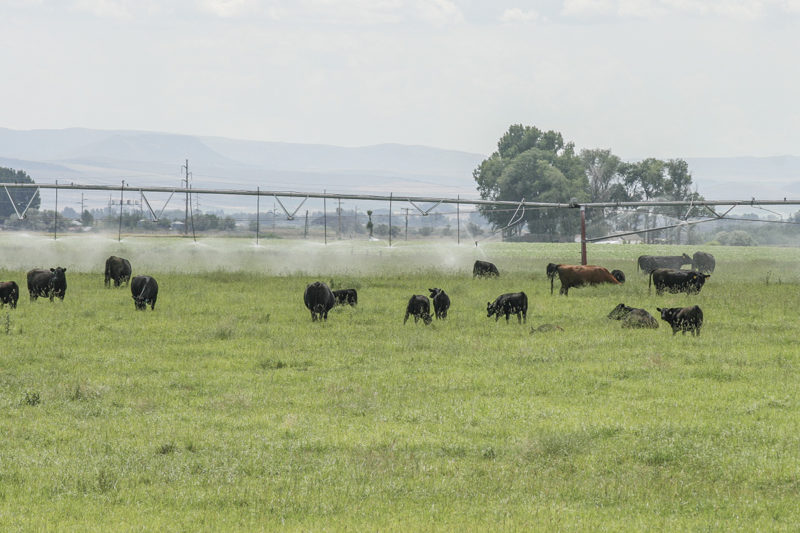Robotics is a complicated and multidisciplinary topic that I don’t understand. It seems natural, then, for me to write a column about robotics. Or more specifically, what I don’t understand about robotics (in agriculture).
For a quick background, I am terrified by the “technological singularity.” Don’t feel silly if you don’t know what that is; I barely do. The technological singularity is a theoretical point where robots and artificial intelligence (the other AI) are so cutting-edge they no longer need humans to advance and multiply. This is The Terminator and about two dozen other B-movies from Hollywood. Technological singularity is when robots take over the world.
But every time I worry about the robots taking over, I will ask Alexa to play my favorite radio station, and my little entertainment robot will instead play Radio Iran … in Farsi. I will chuckle to myself and breathe a sigh of relief. We’re not that close to the technological singularity.
When my kids were younger, they participated in the 4-H robotics program. Robotics is the perfect STEM project because it is interdisciplinary. My kids would integrate mechanical engineering, electrical engineering and computer programming. What they learned from this project: The only thing they hate more than engineering is computer programming. The robotics competition they attended: They described it as a “nerd convention.” I told them I was happy they found a place where they fit in. I laughed … they didn’t.
Everything I know about robotics comes from the 4-H robotics manual. According to 4-H, there are four criteria that define a robot: It must be mechanical, it must have a power source, it must be programmable, and it must have feedback systems. Now, I know exactly what you’re thinking after reading this – the same thing I realized … my pivot is a robot.
There is a fun game I like to play. Whenever a kid from town comes to visit our place, I will gauge their interest in robotics. If they show even an inkling of interest, I will quickly ask if they want to see my robot. I really don’t know what goes through a kid's mind when a cowboy says, “I have a robot,” but I am certain that my robot is not the robot they envision.
We will load up in my side-by-side and drive to the middle of one of my hayfields. They will look at my pivot, still wondering where my robot is, as I open the box on my control panel.
“These stupid sprinklers that I have passed on the interstate are robots?” I can read the disappointment on their face.
I show them the phase converter as proof of the power source and the gearbox as proof that it is mechanical. I will show them how I program the pivot, and then we’ll climb one of the towers to see the feedback systems. And after all this tour, I am still the only one interested in my robot.
We may be on the cusp of an automation advance in agriculture. We have discovered from history that the greatest advances in automation followed some type of shortage, usually a labor shortage. The pivot may be the best example. When I was in high school, there seemed to be a direct relationship between the number of handlines in a community and the number of wins the high school football team achieved. If the youth in a community spent the summer moving handlines, it placed them in prime football-playing shape. But as those communities had more success with their football programs, they spent more money on weight rooms. This readily available source of labor now spends more time in the weight room than in the fields moving handlines. There was a time when the payoff of a pivot was determined by savings on pumping costs and increased yields. Today, perhaps an even bigger factor is the savings in labor cost. And people are quick to point out, these jobs will never come back. But ask anyone who has moved handlines, and they will tell you no one will miss those jobs.
As I was exploring the nuances of automation in agriculture, I came across Jack Keating, founder of a start-up called Corral Technologies. Unlike my kids, Mr. Keating is interested in both engineering and computer programming. He also shares a dislike for building and maintaining fence. Mr. Keating has developed a wireless fencing technology that he describes as “an invisible dog fence, but for cows.”
The technology uses a collar and subtle cues to contain and move cattle through a programmable grazing system. When I asked Mr. Keating where he came up with the idea for his technology, he said, “Efficiency was the driver. Technology should make a task more efficient. Whether it is a more efficient grazing system or a more efficient way to slap labels on a product, efficiency drives the technology. I always viewed traditional fencing as inefficient and my technology as a more efficient way to fence.”
So we will see, autonomous fencing may soon find a place next to my irrigation robot on our outfit. It also makes me think, what other distasteful tasks around the ranch could we use technology to complete so we can spend more time doing what we really enjoy? The list seems endless.

.jpg?t=1687982885&width=640)





